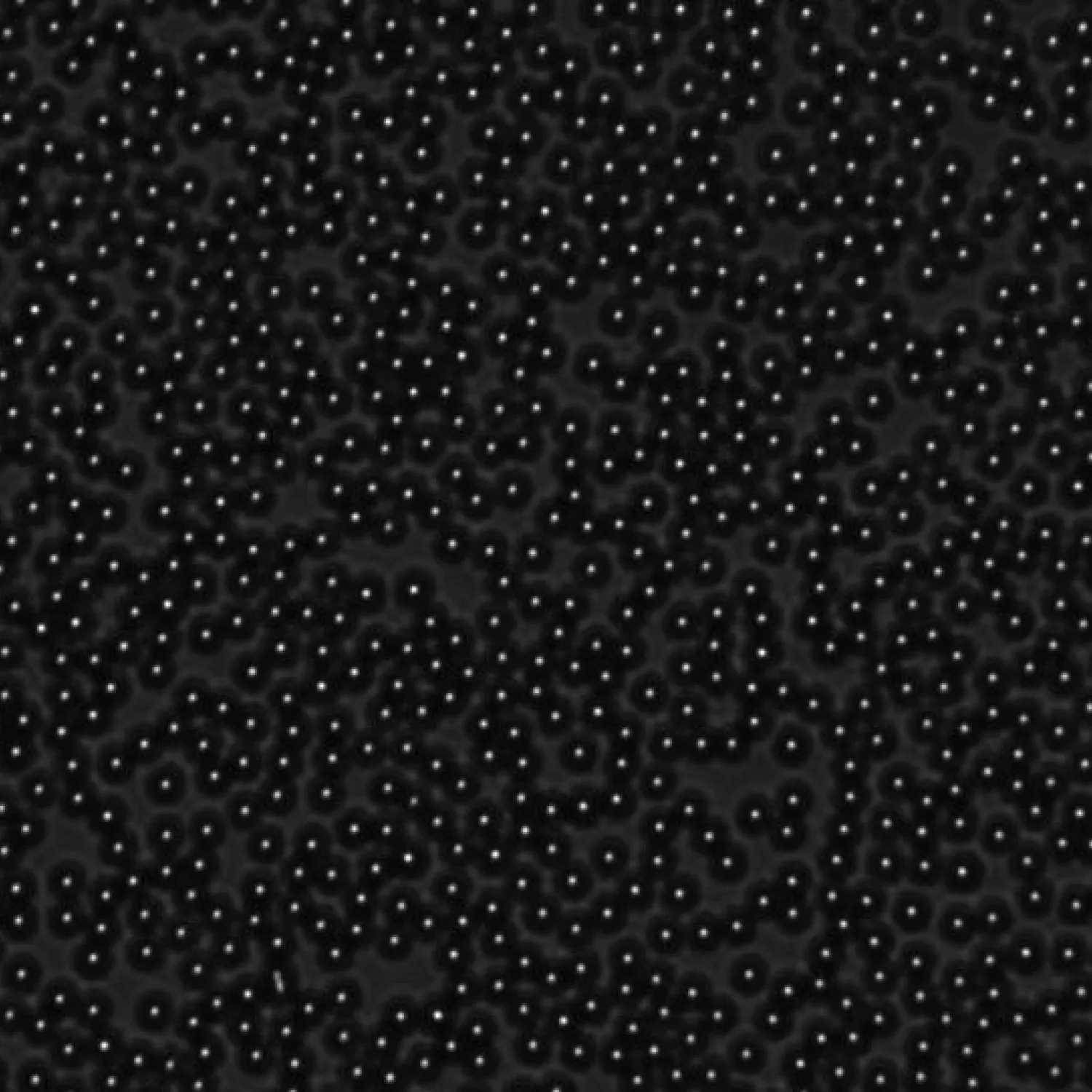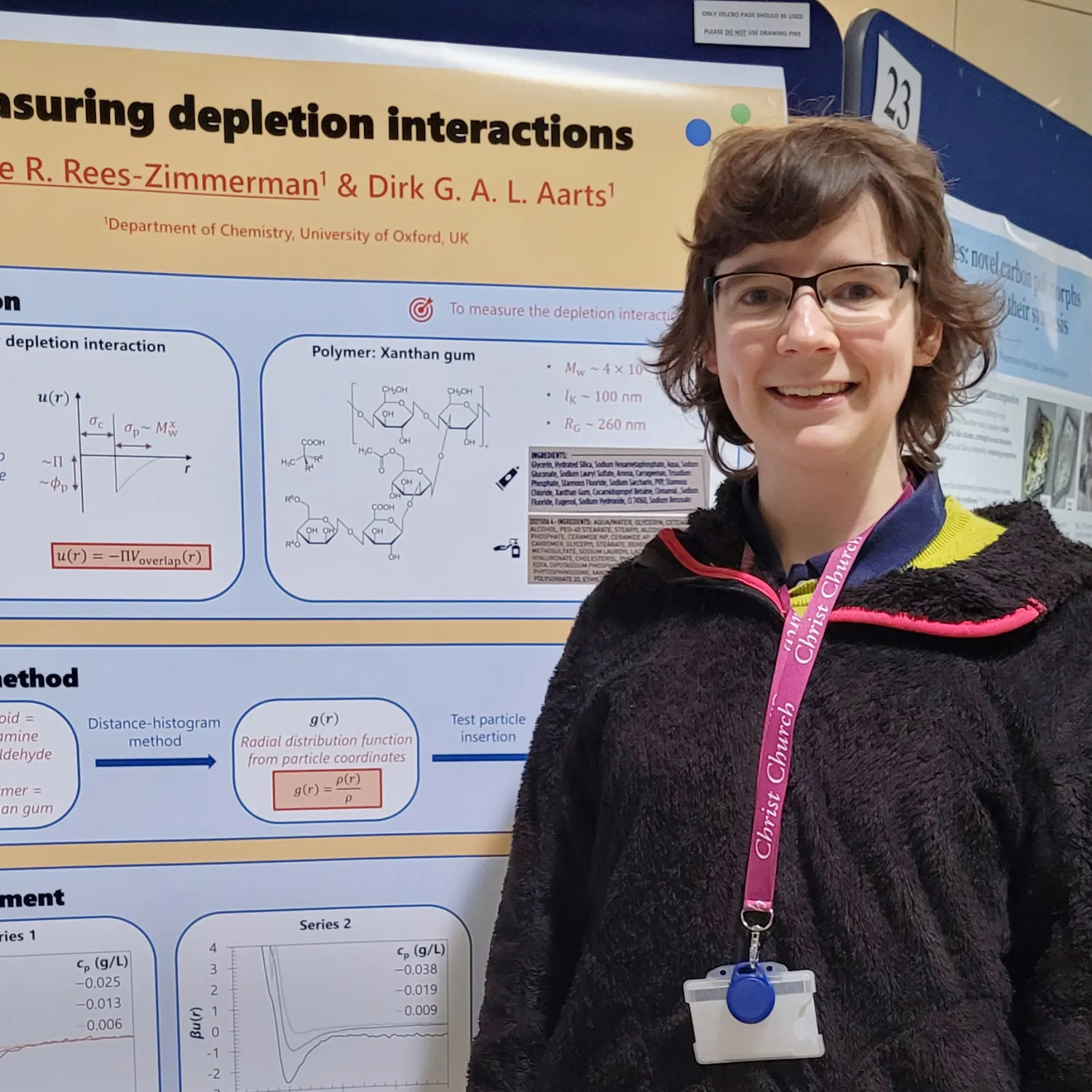Qualifications
MA, MEng Chemical Engineering (Cambridge, 2018); PhD Chemical Engineering (Cambridge, 2022)
Academic background
I am a chemical engineer by training, completing my undergraduate (integrated Masters) and PhD degrees at the University of Cambridge. For my MEng project, I modelled the patterns formed by blood spots during drying, under the supervision of Prof. Alex Routh. The project is important for developing accurate paper diagnostics using blood spots. I also undertook a number of industrial summer internships, including in R&D at Procter & Gamble.
My PhD work examined how a mixture of differently sized particles self assembles in a thin film as it dries. I received the Katharine Burr Blodgett Award from the Royal Society of Chemistry (RSC) for the best PhD thesis in colloid and interface science, and the 2024 Danckwerts-Pergamon Prize from the University of Cambridge Department of Chemical Engineering and Biotechnology for the best PhD dissertation concerning a Chemical Engineering subject. I also received the 2023 IMA (Institute of Mathematics and its Applications) Lighthill-Thwaites Prize for a paper I authored while completing my PhD.
I joined Christ Church as a Junior Research Fellow in October 2022.
Undergraduate teaching
I enjoy teaching, having 4 years’ experience of small group teaching & demonstrating to Chemical Engineering undergraduates at the University of Cambridge.
Engineering (Thermofluids & Engineering in Society)
Research interests
I am hosted by the Oxford Colloid group based in the Department of Chemistry. My current research addresses the need to make functional materials more sustainable, by using less of the expensive components, but still delivering the required properties. It does this using the science of colloidal hydrodynamics (the motion of small particles in fluid), deriving novel equations to model how mixtures of particles flow. In my fellowship, I am working on developing a new class of three-phase composite functional materials. The resulting coatings will have highly tuneable properties and I will explore the most promising applications, from reactor materials to tissue engineering. Regarding fundamental science, the required theoretical work will advance our understanding of multiphase colloidal hydrodynamics.
Featured publications
[1] Rees-Zimmerman, C. R., & Routh, A. F. (2021). Stratification in drying films: a diffusion–diffusiophoresis model. J. Fluid Mech., 928, A15. https://doi.org/10.1017/jfm.2021.800.
[2] Rees-Zimmerman, C. R., & Chaffin, S. T. (2021). Modelling the effect of bioreactor height on stripping fermentation products from the engineered bacterium Geobacillus thermoglucosidasius. Biochem. Eng. J., 176, 108195. https://doi.org/10.1016/j.bej.2021.108195.
[3] Hertaeg, M. J., Rees-Zimmerman, C., Tabor, R. F., Routh, A., & Garnier, G. (2021). Predicting coffee ring formation upon drying in droplets of particle suspensions. J. Colloid Interface Sci., 591, 52–57. https://doi.org/10.1016/j.jcis.2021.01.092.
Other interests and activities
I enjoy playing the violin, languages and keeping active.




